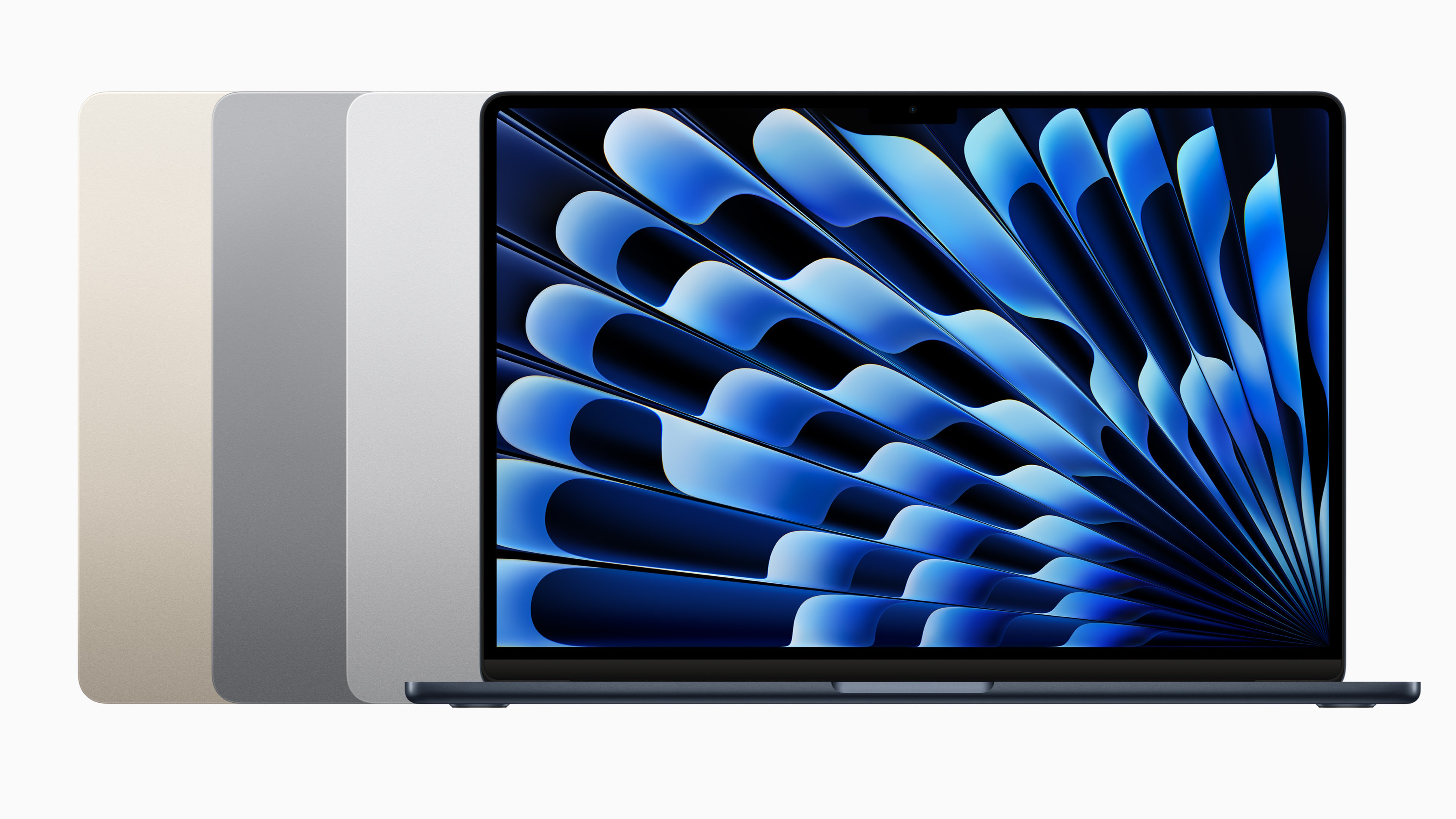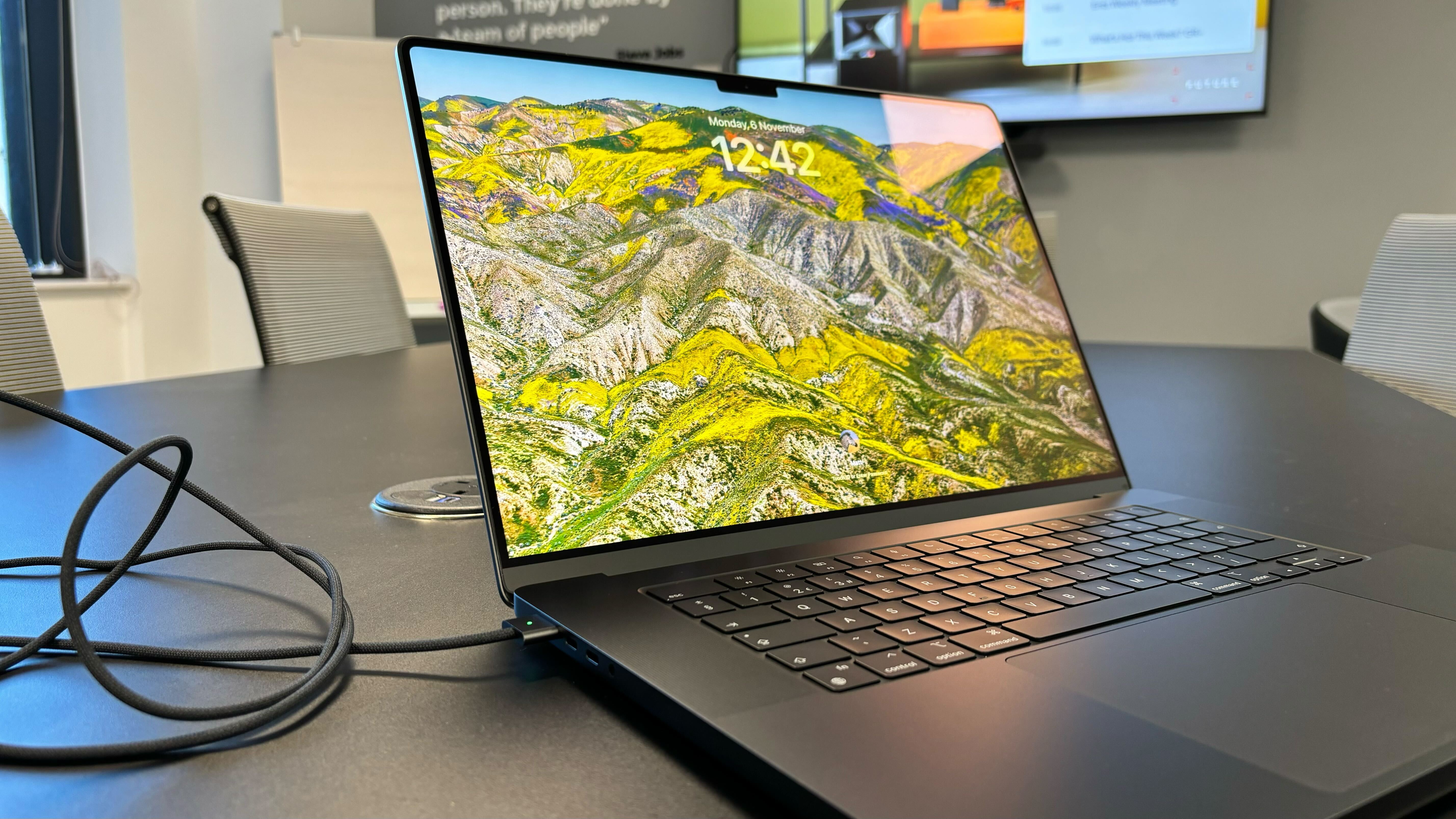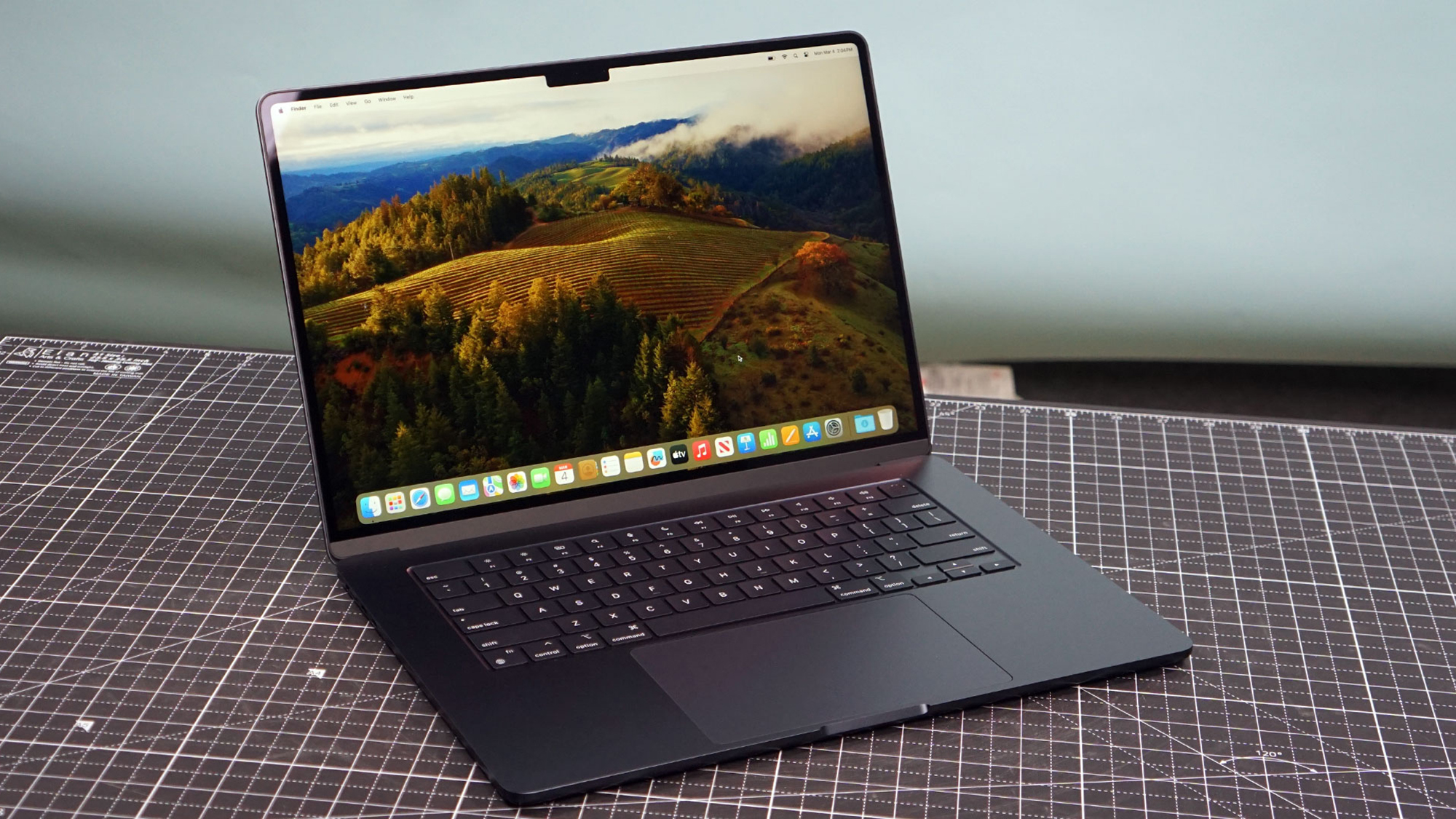MacBook Air vs MacBook Pro: which MacBook is best for you?
Apple's two flagship laptops go head to head

Apple fans are spoilt for choice right now, with the best MacBooks and Macs enjoying hardware updates courtesy of the M3 system-on-a-chip (SoC) – and with multiple screen sizes available for the latest MacBook Air and MacBook Pro models, it can be hard to know which Apple laptop to pick.
At the end of the day, anyone who wants a laptop running macOS has one big choice to make before worrying about screen sizes or component configurations: Air or Pro?
From the latest humble 2020 M1 MacBook Air to the mighty M3 Max MacBook Pro 16-inch, pretty much every laptop Apple has put out since switching over to its own in-house silicon has been a banger in every area: performance, design, battery life, you name it. None of these are bad laptops - but that doesn't mean that all of them are right for you.
In this article, I'll be breaking down the key aspects of the MacBook Air and MacBook Pro lines, to better help you decide which one is ideal for your needs. Read on, and find your perfect laptop.

Available in 13- and 15-inch display sizes, the MacBook Air is still the best Mac product for the majority of people – and now it's been given another power bump thanks to the M3 chip, making it better than ever.
For
- Slim and sleek design
- M3 chip is fantastic
- Good battery life
- Silent operation
Against
- Base configuration is a bit weak
- Fanless design can mean it gets hot

A mobile workstation bringing the power of M3, M3 Pro, and M3 Max chips to deliver top-notch performance across the board, the MacBook Pro is the laptop of choice for content creators around the world.
For
- M3 Pro and M3 Max are powerful
- Fantastic battery life
- XDR display is nothing short of gorgeous
Against
- Very, very expensive
MacBook Air vs MacBook Pro: Price
Well, our first round is a no-brainer. If you're shopping on a budget, the MacBook Air is the cheapest Apple laptop you can buy – mind you, none of them are really worthy of standing among the best budget laptops. Yes, the dreaded 'Apple Tax' is still alive and well.
The current MacBook Air 13-inch with the M3 chip will set you back $1,099 / £1,099 / AU$1,799 in its base configuration, although we noted in our review that you should really spring for the $1,499 / £1,499 / AU$2,399 model that doubles the storage and bumps the unified memory from 8GB up to 16GB - an undeniably costly but worthwhile upgrade. The fully maxed-out model comes with 24GB of unified memory, 2TB SSD storage, and a more powerful 70W USB-C power adapter, and will run you $2,299 / £2,299 / AU$3,599.
Meanwhile, the larger M3 MacBook Air 15-inch starts at $1,299 / £1,299 / AU$2,199, and you can basically just toss that extra $200 on top of any upgraded model you opt for, as the pricing aligns with the 13-inch model.

However, I'm not going to count the MacBook Pro out completely here. If you're seriously considering getting a higher-spec model of the MacBook Air, the current Pro models should absolutely still be on your radar. The MacBook Pro 14-inch with the M3 chip starts at $1,599 / £1,699 / AU$2,699 – yes, UK shoppers are getting a raw deal here, with this laptop costing over 25% more than it does in the US after conversion.
That'll offer marginally better performance than the M3 MacBook Air (thanks to the active cooling in the Pro) along with a few other extra features that I'll discuss later. But if you want a truly more powerful laptop, you're going to be shelling out a fair bit more. The 16-inch version – which only comes with the M3 Pro or M3 Max chip - starts at $2,499 / £2,599 / AU$4,299 and runs up to a staggering $7,199 / £7,299 / AU$11,699 for the fully kitted-out model – though that does offer a hefty 128GB of RAM.
If you really need a MacBook but you're strapped for cash, do consider the older M1 and M2 Air models. The 2022 M2 MacBook Air is still sold directly from Apple for $999 / £999 / AU$1,599, while the OG M1 model is often available from third-party retailers for even less. Just avoid any older Intel-based Macs – Apple has already started sunsetting macOS support for those laptops.
MacBook Air vs MacBook Pro: Design

Unsurprisingly, the MacBook Air is the more portable of these two devices (although the 15-inch model is naturally a little heavier than the 14-inch MacBook Pro), so if you want a laptop for regularly working on the go, the 13-inch Air is the obvious choice at just 1.24kg and less than 12mm thick.
In truth though, all of these laptops are relatively easy to take along with you in a laptop bag or backpack. The machined metal chassis on every model means these aren't the lightest laptops on the market, but even the MacBook Pro 16-inch only weighs 2.2kg – far less than a beefy 'desktop-replacement' gaming laptop like the MSI Titan 18 HX.
Portability isn't everything, however. The MacBook Air – despite its name – uses a fanless design with passive component cooling only, meaning that it runs silently but also gets hot faster if you're running demanding programs for extended periods. MacBook Pros, on the other hand, use active fan cooling – and in our reviews we've noted that those fans can get fairly noisy.
But the bigger chassis of the Pro does lend itself some advantages. The main one is ports: where the MacBook Air has lost more and more ports over the years, now down to just a measly two Thunderbolt 4 USB-C ports and a 3.5mm headphone jack, the current-gen Pro models sport three of those same Thunderbolt 4 ports and the 3.5mm jack along with an SDCX card slot (great for photographers) and an HDMI port (great for, well, everyone). While USB-C can be used for connecting external monitors or TVs, many displays still need an HDMI or DisplayPort connection, so you may need to buy an adapter if you opt for a MacBook Air and want to hook it up to a larger screen.
Both the Pro and Air models currently available from Apple use the exact same Magic Keyboard layout and Force Touch touchpad. Since Apple axed the nifty Touch Bar seen in older MacBook Pros (why, Apple, why?!), the only other significant design difference is the speakers, which are higher-fidelity in the MacBook Pro - potentially useful for audiophiles and musicians, although many users will just end up wearing the best headphones anyway.
MacBook Air vs MacBook Pro: Features

Rest in peace, Touch Bar, you will be missed. Ever since Apple nixed the long, thin touch display above the keyboard from its MacBook Pro range, the Pro and Air have been remarkably similar in terms of feature set – something I don't personally like, but this isn't about me, so I'll stop complaining about that now.
The biggest difference between the Pro and Air in terms of feature set is the display. While all MacBooks use the same Liquid Retina mini-LED technology in their screens, both the 14- and 16-inch MacBook Pro models offer higher resolutions (with the 16-inch model boasting the highest at 3456 x 2234) and better peak brightness at 600 nits against the Air's 500 nits.
The Pro laptops also use XDR displays (similar to the Mac Studio), which excel at displaying HDR content with higher brightness and better color reproduction. In other words, if you work in a visual creative field like photography, graphic design, or film, the superior color, contrast, and sharpness of the MacBook Pro's display could be a significant boon.
The MacBook Air has had a Wi-Fi upgrade from the M2 generation, meaning that now the Air and Pro are evenly matched when it comes to wireless connectivity: all the M3-era models feature Wi-Fi 6E and Bluetooth 5.3. They also have the same Full HD FaceTime webcam, with the design now unified to position the webcam in a notch at the top of the display.
MacBook Air vs MacBook Pro: Performance

This is the inverse of round one: of course, the MacBook Pro offers better performance than the MacBook Air, it's the more expensive, more powerful product.
That's not to say the 13- and 15-inch M3 MacBook Air models are slouches, though. Even the standard M3 chip is seriously impressive, so it's no wonder the base configuration of the new MacBook Pro 14-inch uses the exact same chip (albeit with a more powerful cooling solution).
The M3 Pro and M3 Max chips offer superior performance, but all of these MacBooks can reasonably handle tasks like video editing, 3D rendering, and even gaming. The M3 Max is honestly overkill for anyone who isn't doing serious professional creative tasks, like working with 8K video.
With the M3 generation, there's also a fresh focus on AI features – although we're yet to properly see these fully integrated into macOS, the M3 chip packs a new version of Apple's 'Neural Engine' NPU, meaning that it should be relatively future-proofed for any future AI features that get added to the OS. Again, though, it looks like you'll want at least 16GB of memory for that...
M3 has unfortunately brought down the battery life a little compared to previous generations, with both sizes of the M3 Air lasting for around 15 hours of mixed use. Don't get me wrong though, that's still impressive compared to many of the best Windows laptops.
Ironically, the powerhouse M3 Max MacBook Pro 16-inch actually scored the best for longevity across all our reviews, lasting for more than 24 hours thanks to its huge internal battery. Still, any of these will comfortably last for a full workday unless you're running some extremely resource-intensive software.
Which MacBook is right for you?
As you can probably tell by now, Apple has been gradually homogenizing these laptops – so unless you really need high-end performance or a high-fidelity display, the Air is probably going to be the better option.
I'm not disparaging the MacBook Pro here, even though the pricing on high-spec configurations does make me wither a little. For professionals working with graphic design, video editing, audio mixing, or even scientific modeling software, it's a stellar choice that will absolutely meet your expectations. But if you're just a content creation hobbyist, or you simply want a macOS laptop for your day-to-day office work and web browsing, stick with the Air. It's the 'world's best-selling laptop' for a reason.
Of course, with the M4 chip already out in the wild in the new iPad Pro 13-inch, we're probably not that far off from seeing a fresh generation of MacBooks – even though the M3 models all only launched within the last twelve months. So unless you really want to buy a new MacBook today, consider holding off – leaks say M4 versions could be landing as early as this year.
Get daily insight, inspiration and deals in your inbox
Sign up for breaking news, reviews, opinion, top tech deals, and more.

Christian is TechRadar’s UK-based Computing Editor. He came to us from Maximum PC magazine, where he fell in love with computer hardware and building PCs. He was a regular fixture amongst our freelance review team before making the jump to TechRadar, and can usually be found drooling over the latest high-end graphics card or gaming laptop before looking at his bank account balance and crying.
Christian is a keen campaigner for LGBTQ+ rights and the owner of a charming rescue dog named Lucy, having adopted her after he beat cancer in 2021. She keeps him fit and healthy through a combination of face-licking and long walks, and only occasionally barks at him to demand treats when he’s trying to work from home.